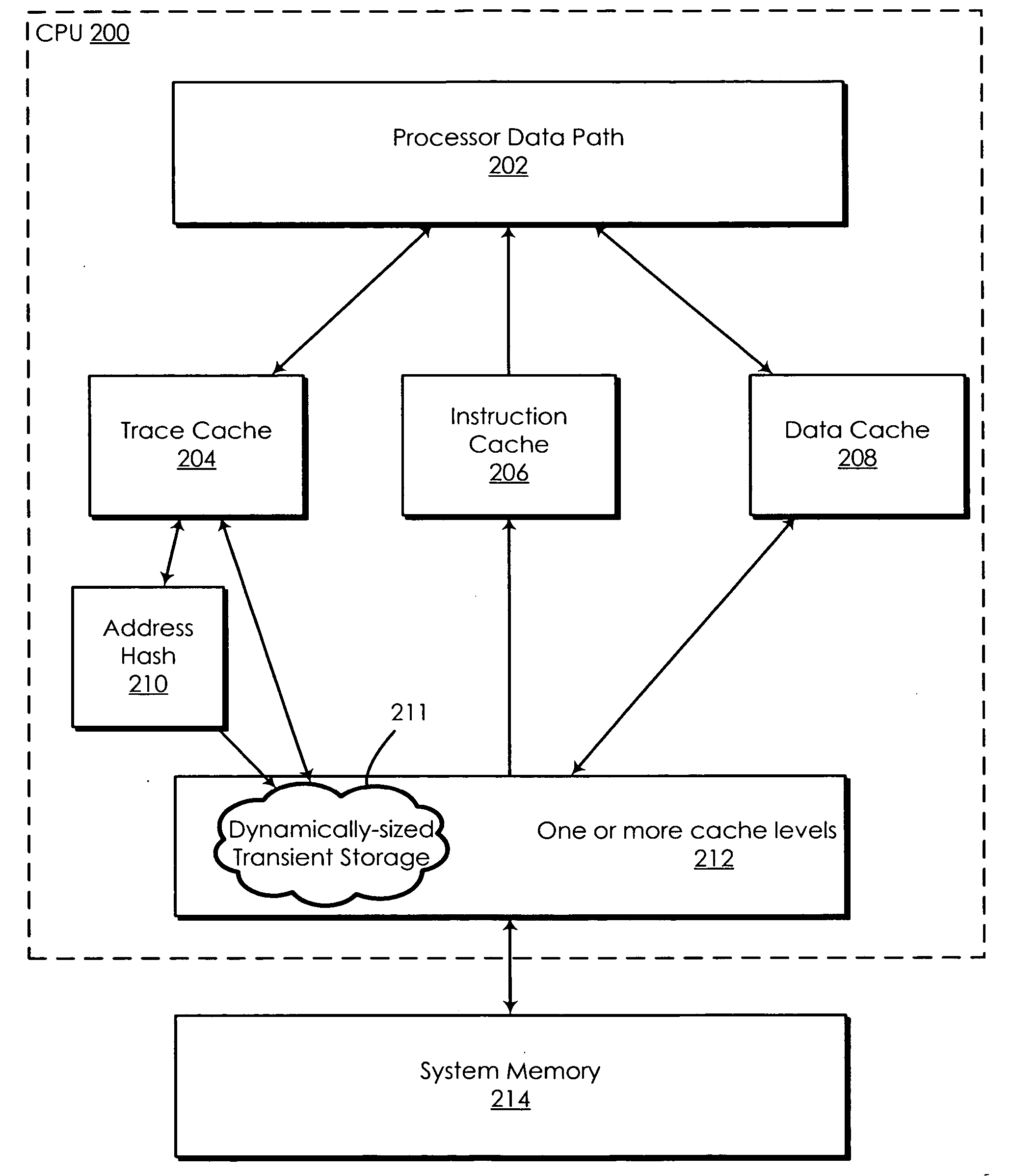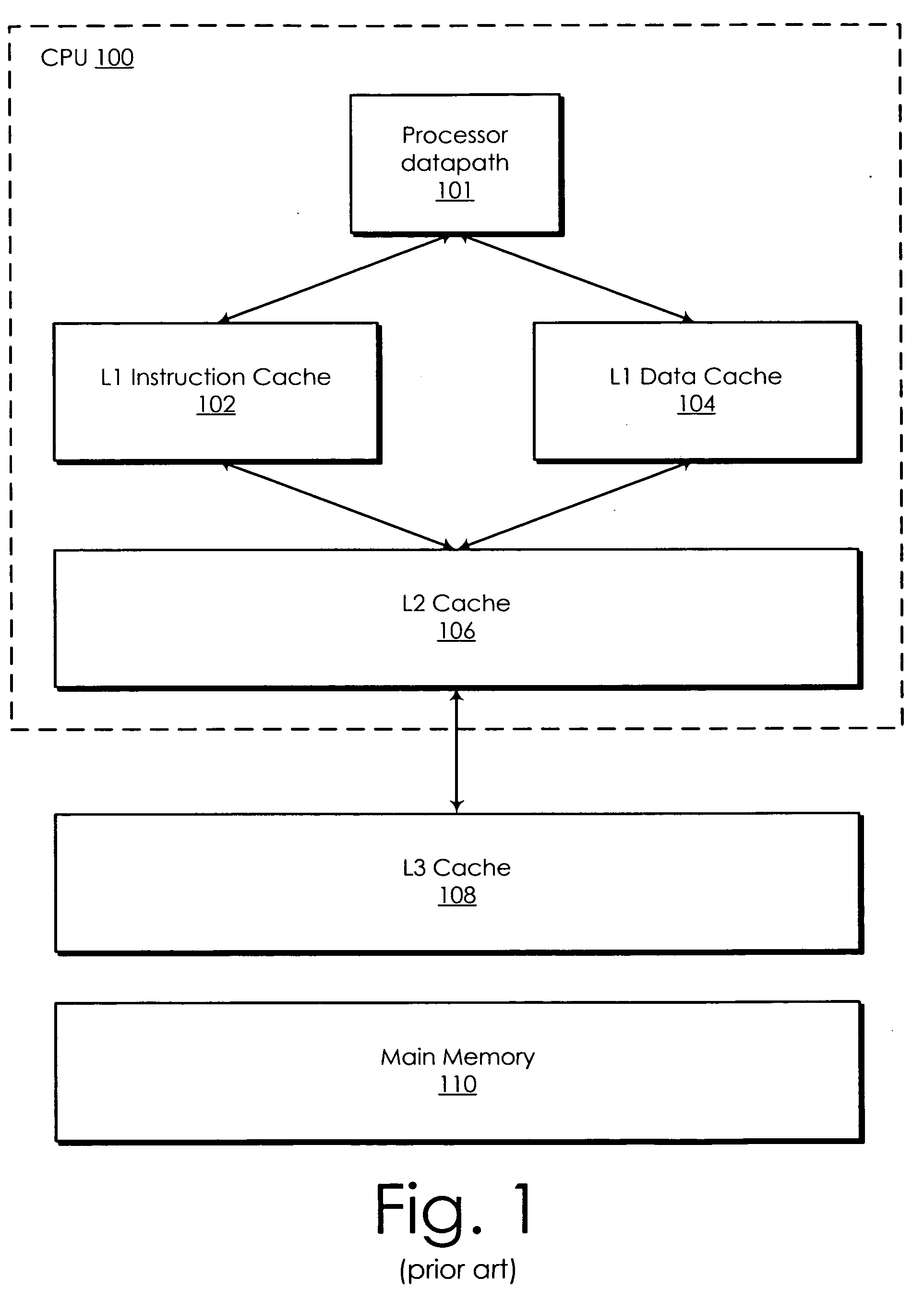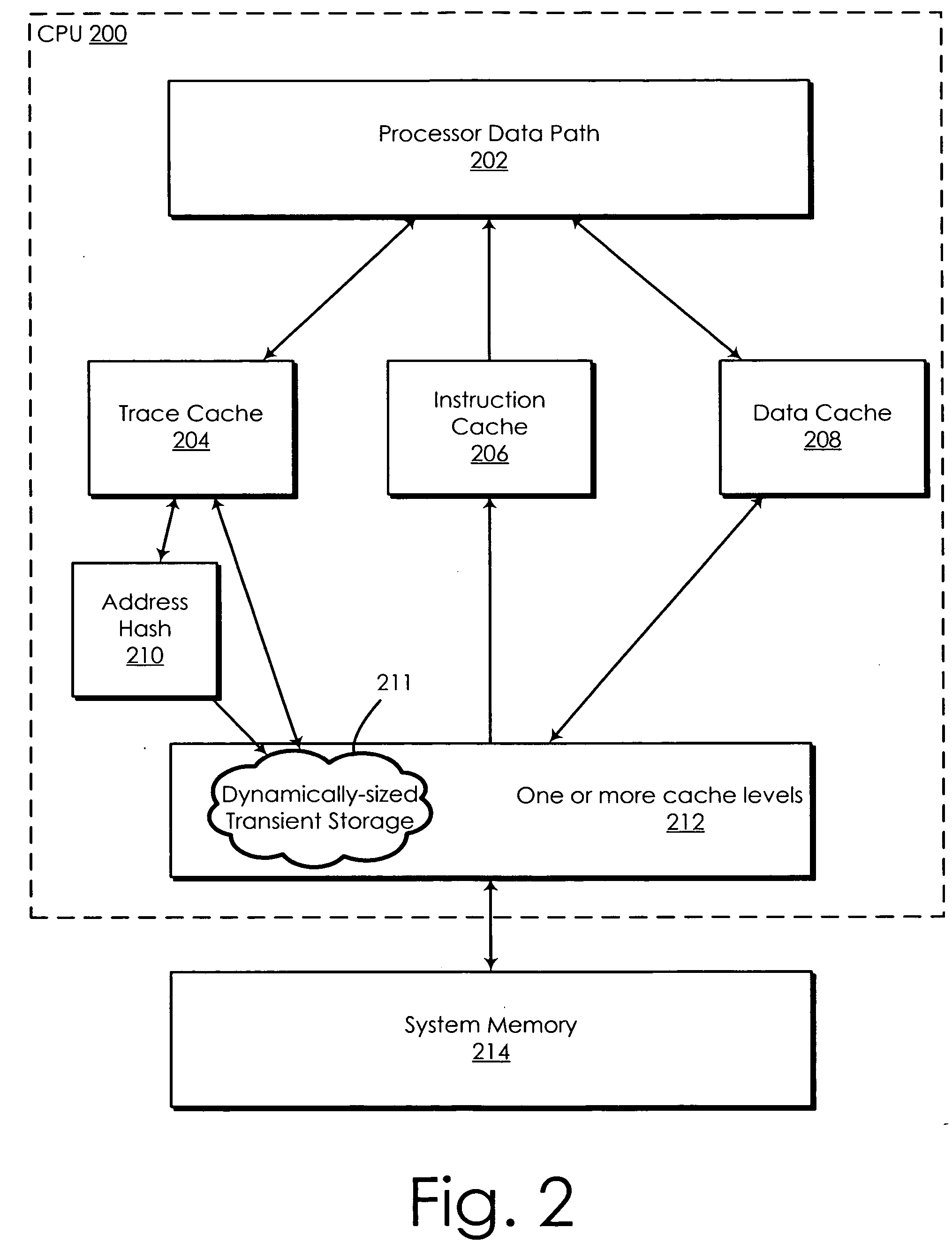Transient cache storage
a cache and storage technology, applied in the field of computer system cache architectures, can solve the problems of affecting the design/test process, and affecting the performance of the cache, so as to achieve the effect of not imposing significant costs on the processor design
- Summary
- Abstract
- Description
- Claims
- Application Information
AI Technical Summary
Benefits of technology
Problems solved by technology
Method used
Image
Examples
Embodiment Construction
[0023] The following is intended to provide a detailed description of an example of the invention and should not be taken to be limiting of the invention itself. Rather, any number of variations may fall within the scope of the invention, which is defined in the claims following the description.
[0024]FIG. 1 is a diagram illustrating a multi-level cache architecture as may be utilized in a preferred embodiment of the present invention. Central processing unit (CPU) 100 comprises a main processor datapath 101, a Level 1 (L1) instruction cache 102, and a Level 1 (L1) data cache 104. L1 caches 102 and 104 improve the memory access performance of CPU 100 by providing quickly accessed, processor-local copies of currently in-use memory locations from which instructions are read (instruction cache 102) and data are read and written (data cache 104). Utilizing separate L1 instruction and data caches, as shown in FIG. 1, allows some of the performance benefits of a Harvard-style computer arc...
PUM
 Login to View More
Login to View More Abstract
Description
Claims
Application Information
 Login to View More
Login to View More - R&D
- Intellectual Property
- Life Sciences
- Materials
- Tech Scout
- Unparalleled Data Quality
- Higher Quality Content
- 60% Fewer Hallucinations
Browse by: Latest US Patents, China's latest patents, Technical Efficacy Thesaurus, Application Domain, Technology Topic, Popular Technical Reports.
© 2025 PatSnap. All rights reserved.Legal|Privacy policy|Modern Slavery Act Transparency Statement|Sitemap|About US| Contact US: help@patsnap.com



